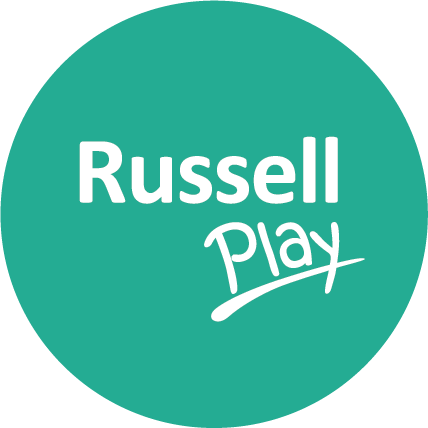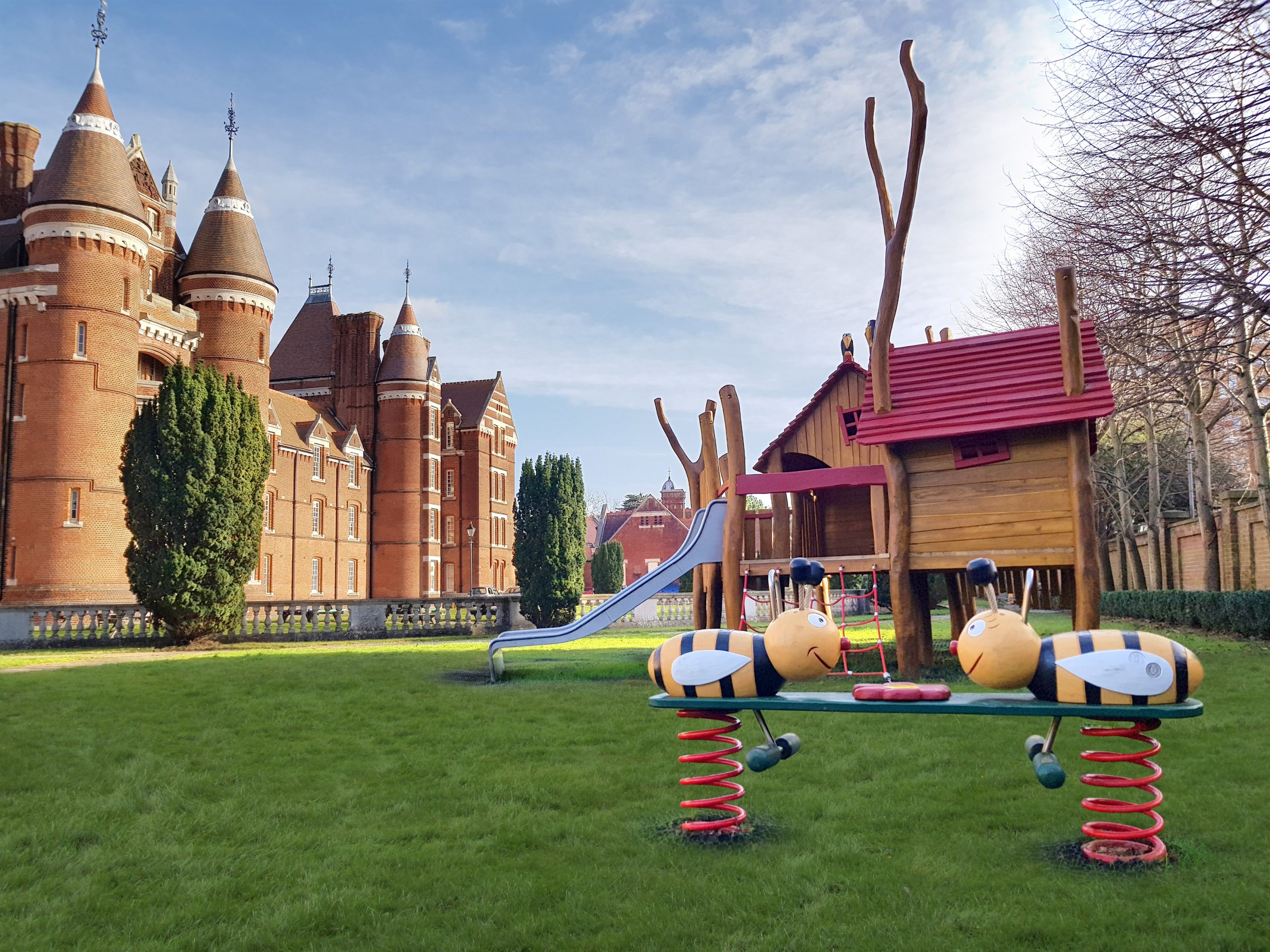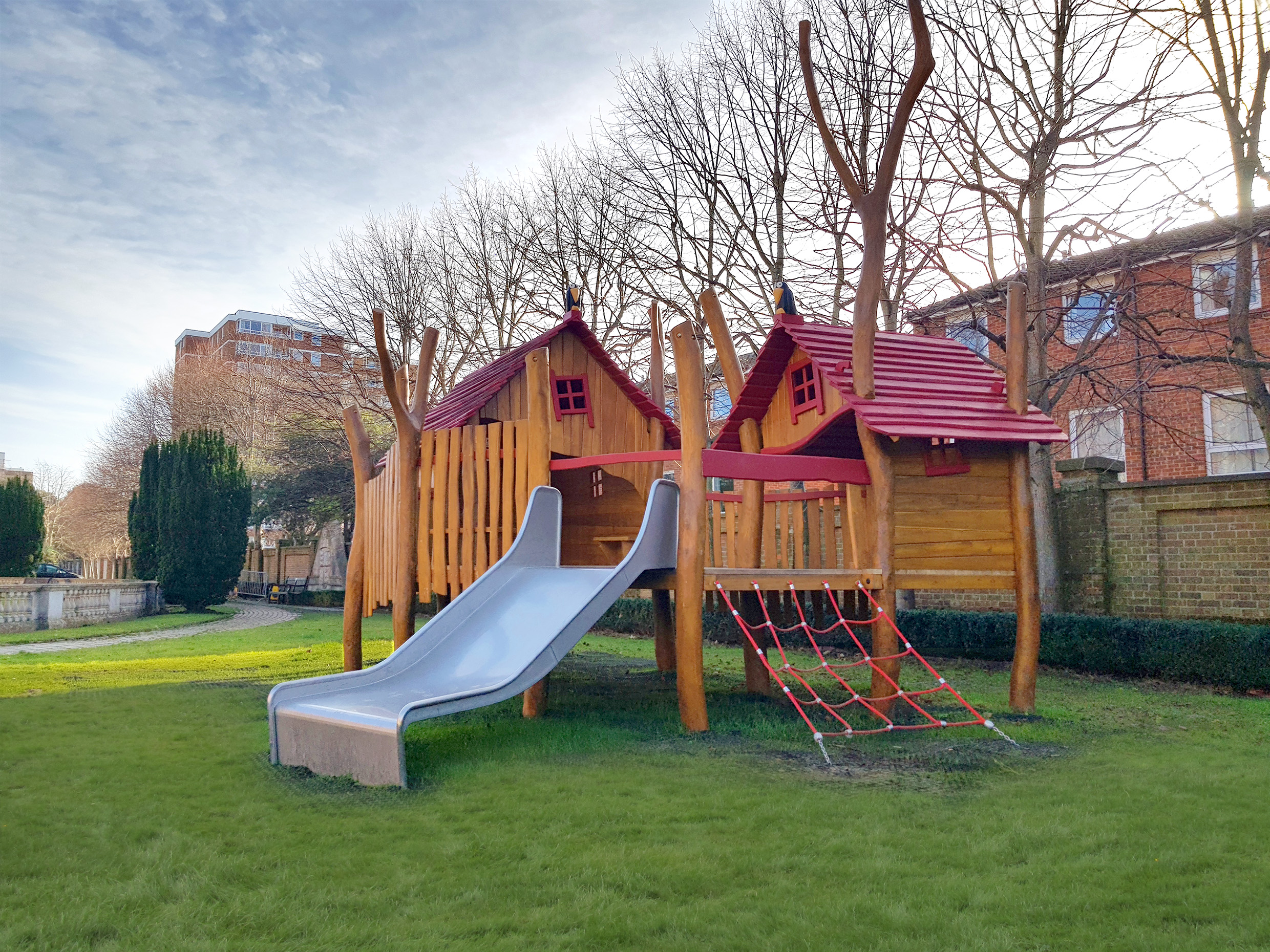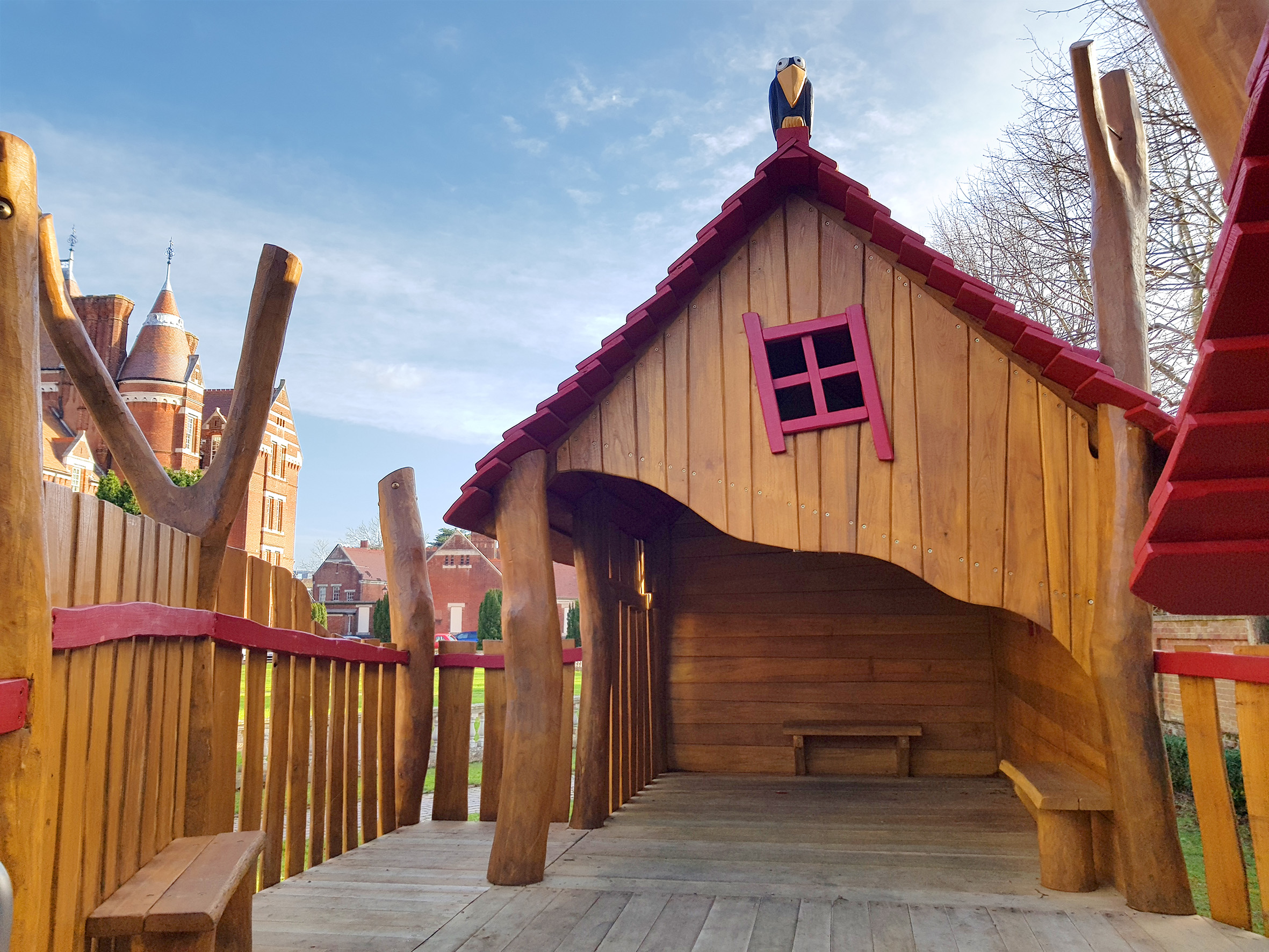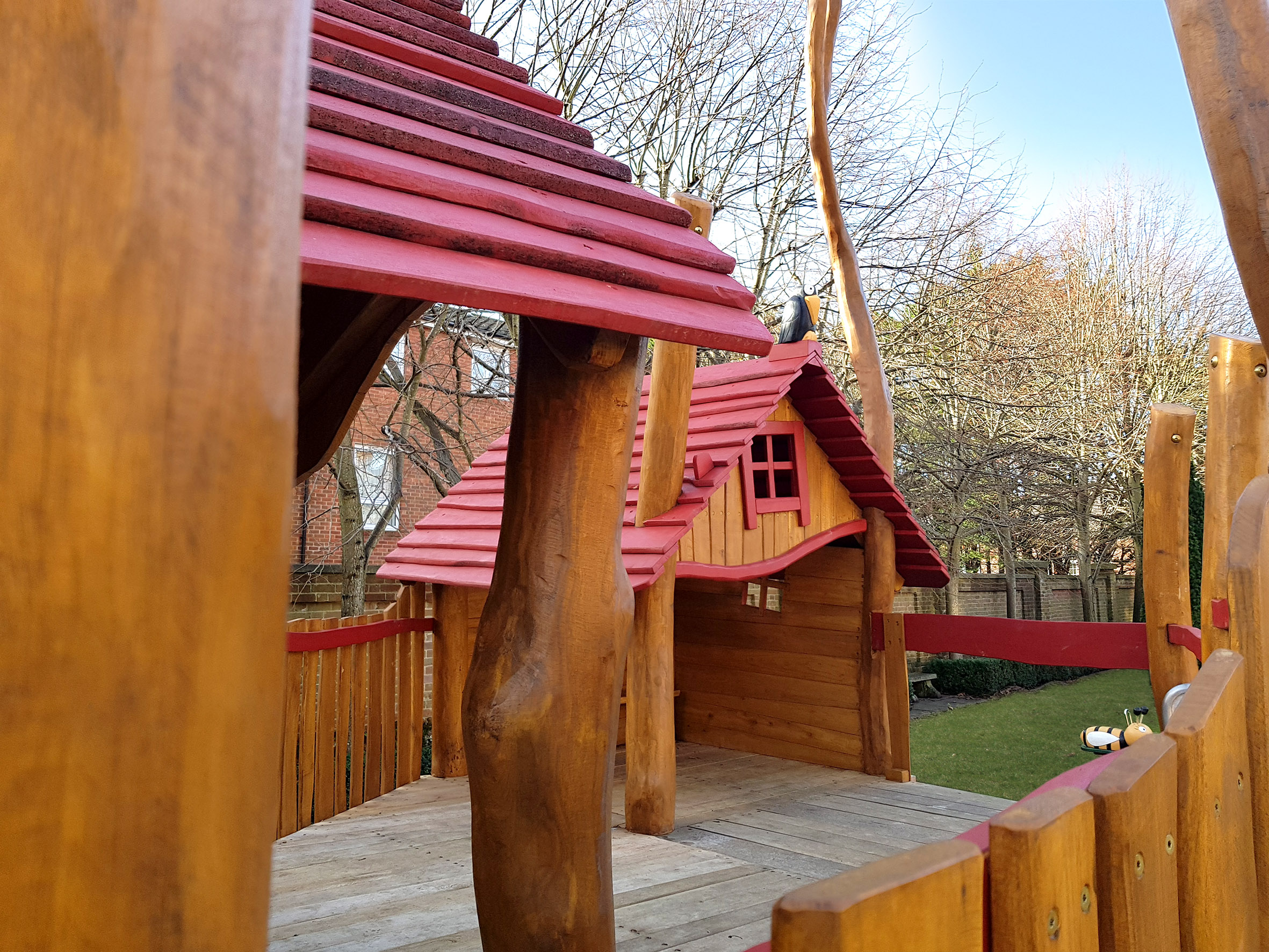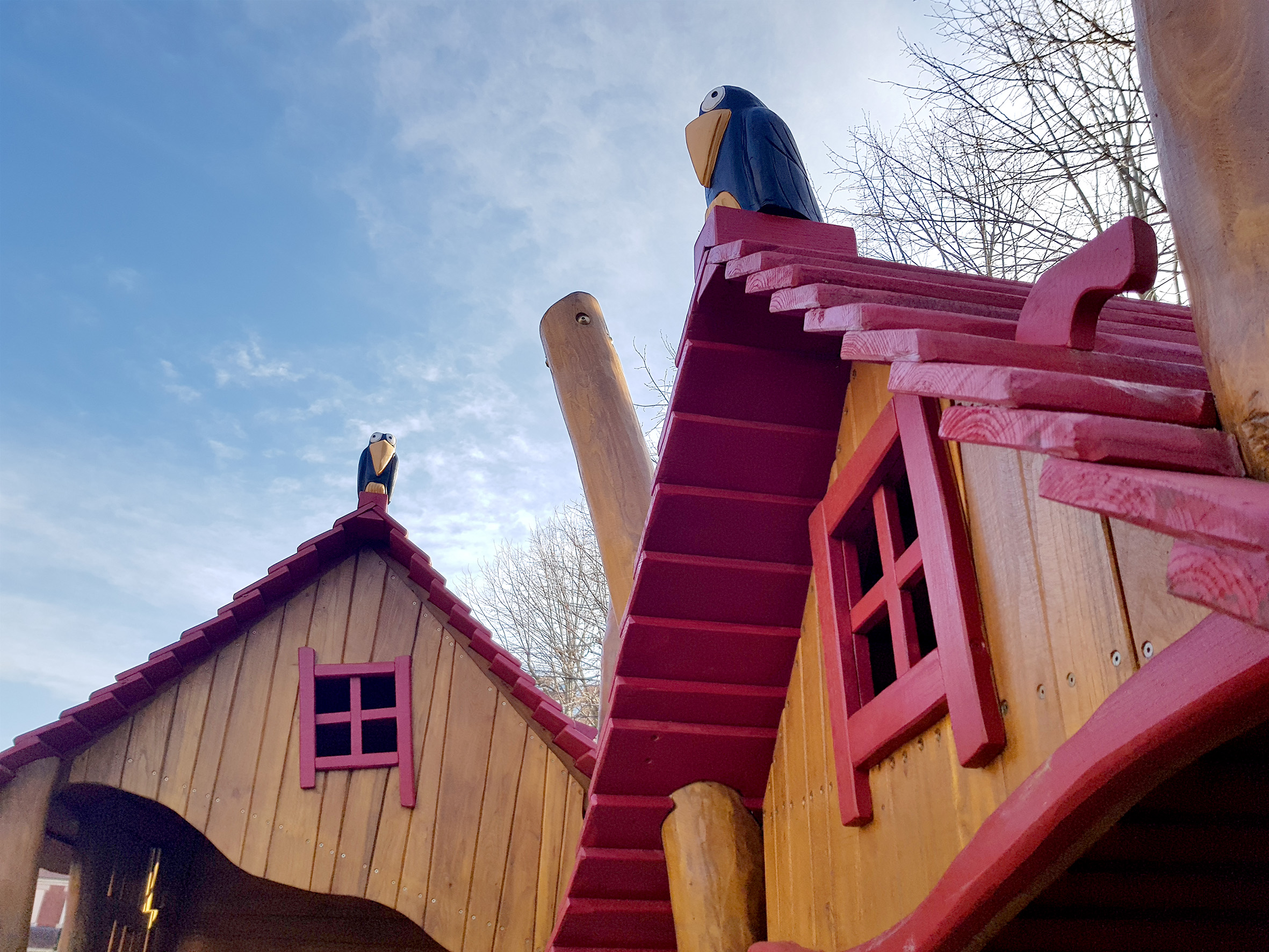Portsmouth City Museum
The red brick museum building with conical roofs and turret-like motifs dates back to the late 19th century and was originally part of a military barracks. The building was acquired for use by Portsmouth City Museum in 1972 after the rest of the barracks were demolished. It has a good area of attractive green space outside the entrance with a formal garden of low walls and paths where the play area was planned to be located. Play structures like this show how a play area can provide plenty of fun but also blend well with its surroundings. The sympathetic colouring does not jar with that of the museum building. The golden yellow stain, with its red roofs and window highlights complement the red brick and stone windows of the museum. The natural hardwood materials of timber and oak for the playhouse work perfectly in the tree-lined setting and looks pleasant to adult visitors, while the playful style of the design invites children to play.
The playhouses which are conjoined with a large raised platform have a double width stainless steel slide, net access with small hideaways and underside seating. The platform, which overlooks the museum, has a large capacity, great for accommodating visiting school trips. There is also a bumble-bee see saw springer adding colour, character and a bit of playful charm to the play space. Portsmouth City Council invited Russell Play, along with two other play companies, to present ideas for a standalone play piece, which would be suitable for young school children when visiting the museum. The three proposals were then put to the museum manager to make the final decision on which design to implement and the Russell Play design was chosen.
Client:
Portsmouth City Council
Equipment:
Spielart
Designer:
Russell Play
